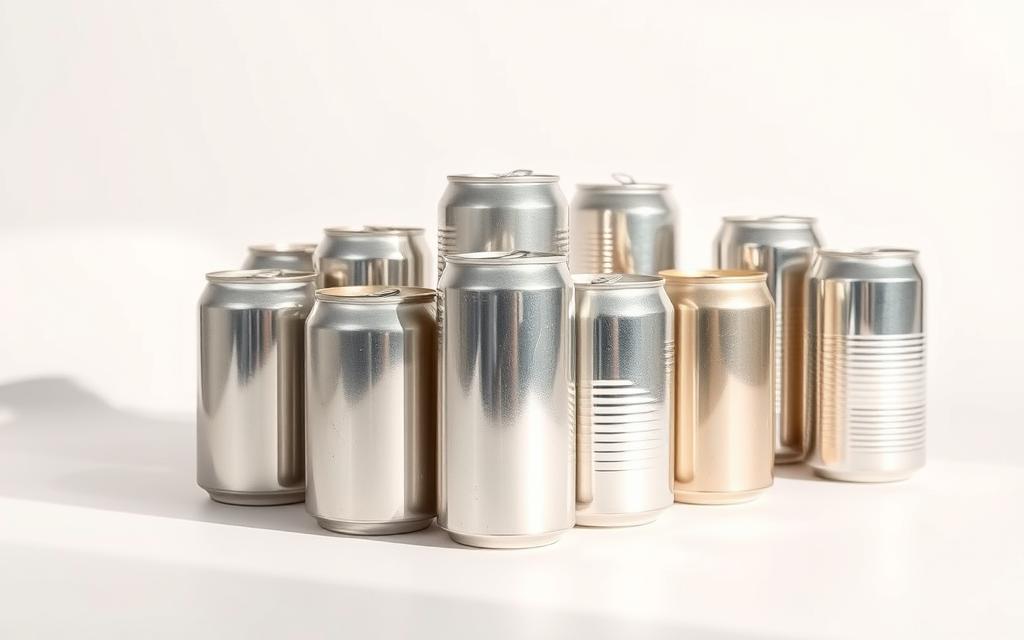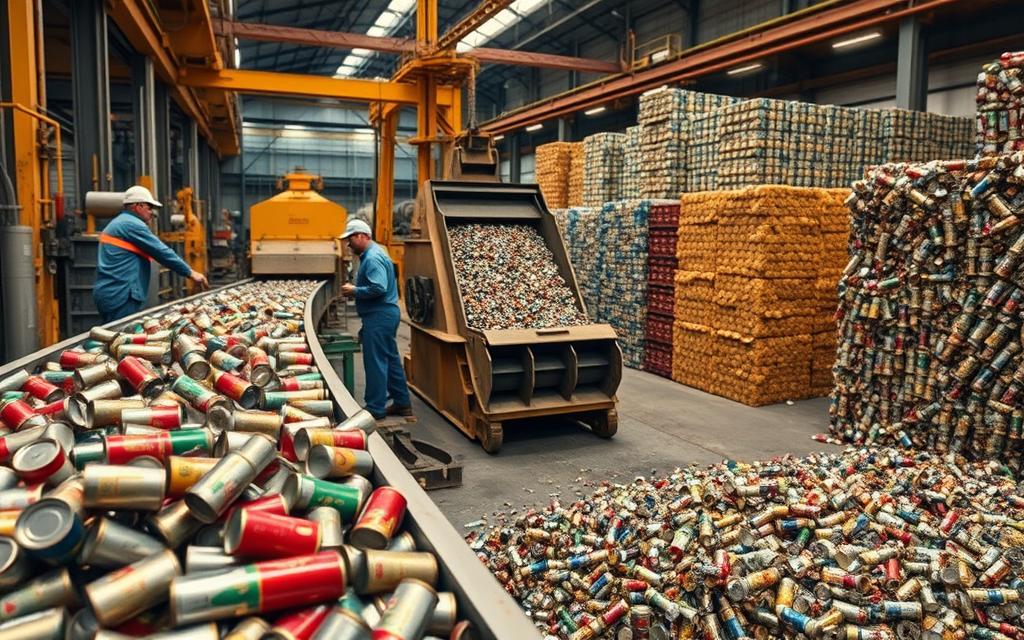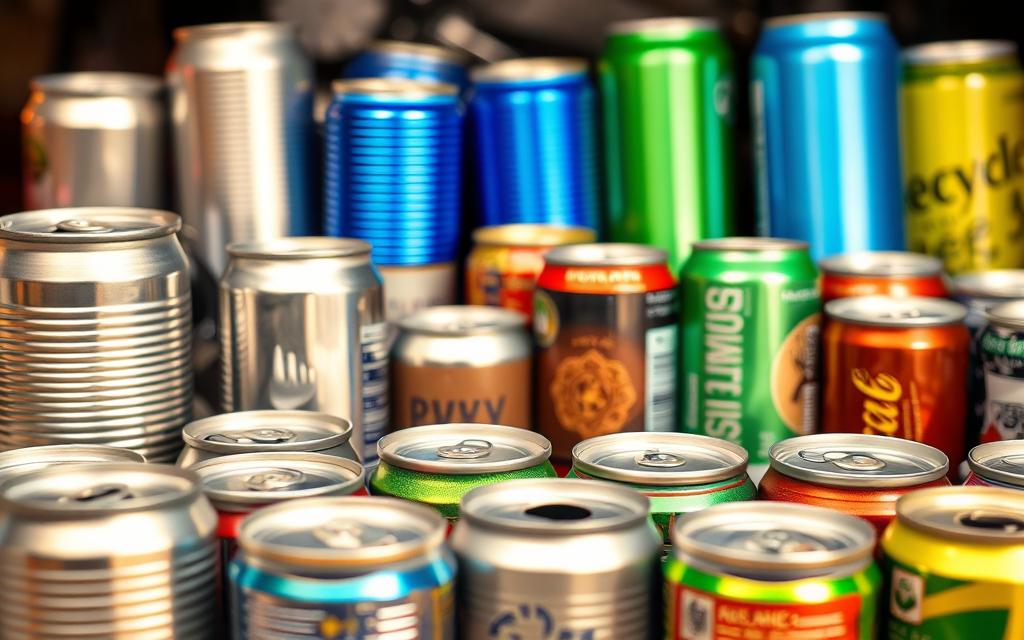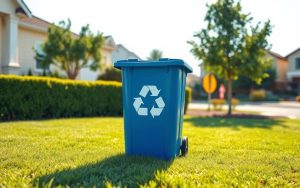Steel and tin cans have been a staple in food packaging since the 14th century. These materials are not only durable but also highly sustainable. Today, steel boasts an impressive 88% recycling rate, the highest among all metal types. This means most of the steel used in cans comes from recycled sources.
Common household items like soup cans, pet food containers, and vegetable tins are made from steel coated with a thin layer of tin. This coating protects the metal from corrosion without affecting its recyclability. In fact, 75% of all tin cans ever produced are still in use today.
Recycling these materials reduces waste and conserves resources. Whether it’s aluminum or steel, these metal containers play a vital role in sustainable living. Stay tuned to learn more about the preparation steps, environmental benefits, and the recycling process.
Introduction to Tin Recycling
Tin recycling has evolved from a medieval practice to a modern sustainability necessity. Initially used for storage, tin-coated materials now play a vital role in reducing waste and conserving resources. Today, steel and aluminum cans dominate the recycling landscape, with impressive rates of 85.5% and 73% in Europe, respectively.
In the United States, recycling efforts for metal packaging continue to grow. Unlike other materials, tin cans can be recycled infinitely without losing quality. This closed-loop system ensures that every recycled can becomes a new product, reducing the need for raw materials.
Tools like Recycle Coach make it easier for households to follow local recycling guidelines. This app provides step-by-step instructions, ensuring that cans and other materials are processed correctly. Such innovations simplify the process and encourage broader participation.
Tin’s unique properties, such as its magnetic nature, make it easy to separate from other materials during recycling. While aluminum is often used for beverages, tin-coated steel is preferred for food products. Understanding these differences helps optimize the recycling process and benefits the environment.
Are Tins Recyclable? Understanding the Basics
From soda cans to tea tins, metal containers are widely recyclable. These everyday items, often made from steel or aluminum, play a key role in reducing waste and conserving resources. Understanding which types of metal cans can be recycled helps streamline the process and maximize environmental benefits.

Types of Metal Cans That Are Recyclable
Households encounter a variety of metal containers, many of which can be recycled. Common examples include soda cans, tea tins, and spice containers. Even popcorn tins and mint containers, like Altoids, fall into this category. However, some items require special handling.
Candle tins, for instance, need wax removal before recycling. Paint and aerosol cans often have separate recycling streams due to their contents. Always check local guidelines for these special cases.
Identifying the type of metal is also crucial. A simple magnetic test can distinguish steel from aluminum. Steel cans are magnetic, while aluminum ones are not. This distinction ensures proper sorting and processing.
Brands like Folgers coffee cans and Altoids mint tins are excellent examples of recyclable metal packaging. Most cities accept these items in curbside programs, but specialty recycling may be needed for certain containers. For more detailed guidance, visit Earth911’s recycling guide.
How to Prepare Tin Cans for Recycling
Preparing tin cans for recycling is a simple yet impactful step toward sustainability. Proper preparation ensures these materials are processed efficiently, reducing waste and conserving resources. Follow these steps to get your cans ready for the recycling bin.
Cleaning and Rinsing Tin Cans
Start by removing any leftover food or residue. Use warm water and a scrubber to clean the inside thoroughly. For stuck-on things, like tomato sauce or grease, soak the can briefly before scrubbing. This ensures the cleaning process is effective and prevents contamination in the recycling bin.
Check local guidelines for food residue thresholds. Most programs require cans to be “empty and clean.” Avoid using harsh chemicals, as they can interfere with the recycling process.
Removing Labels and Lids
While paper labels are often removed during processing, some municipalities prefer you take them off beforehand. If unsure, leave them on. For lids, use the “lid insertion” technique to prevent hazards to animals and workers. Simply push the lid inside the can and pinch the top to secure it.
Sharp edges can be dangerous. Use gloves or a towel to handle lids safely. For specialty items like beer cans or greasy popcorn tins, follow specific instructions from your local recycling program.
| Tool | Best Use |
|---|---|
| Scrub brush | Removing stuck-on food |
| Soap and water | General cleaning |
| Gloves | Handling sharp edges |
The Benefits of Recycling Tin Cans
Recycling tin cans offers significant environmental and economic advantages. This process not only conserves natural resources but also minimizes industrial pollution. By understanding these benefits, individuals and businesses can make informed decisions that support a sustainable future.

Reducing Resource Depletion
Recycling tin cans helps preserve valuable natural resources. For example, recycling one ton of steel saves 2,500 pounds of iron ore. This reduces the need for mining, which often disrupts ecosystems and consumes large amounts of energy.
In addition, recycling steel uses 57-67% less energy compared to traditional production methods. This energy efficiency translates into fewer greenhouse gas emissions. The automotive industry, for instance, relies heavily on recycled steel to manufacture parts, showcasing its practical uses.
Decreasing Industrial Pollution
Industrial processes, such as smelting, generate significant pollution. Companies like Rio Tinto operate 11 dedicated power plants to minimize emissions during smelting. Recycling tin cans reduces the number of such facilities needed, thereby lowering harmful pollutants like PFCs.
Recycling also contributes to a circular economy. A soup can, for example, can be transformed into a skyscraper beam. This reduces waste and ensures that products remain in use for longer periods. Such practices benefit the environment by reducing landfill waste and conserving raw materials.
| Benefit | Impact |
|---|---|
| Resource Conservation | Saves 2,500 lbs of iron ore per ton of recycled steel |
| Energy Efficiency | Uses 57-67% less energy than traditional production |
| Pollution Reduction | Lowers PFC emissions and industrial waste |
The Limitations of Recycling Tin
Recycling tin comes with its own set of challenges and costs. While it’s a sustainable practice, the financial and logistical aspects can be complex. Understanding these limitations helps in making informed decisions about recycling programs and policies.

The Cost of Recycling Tin
One major limitation is the cost of recycling. Scrap tin currently fetches around $160 per ton, but individual collection and processing expenses often exceed this value. Municipal recycling programs require significant investments in infrastructure, such as Material Recovery Facilities (MRFs), which can cost over $2 million.
Here are some key factors that impact the financial viability of tin recycling:
- Break-even analysis: Scrap collection becomes profitable only when volume and market conditions align.
- Contamination costs: Food residue and other things in the bin can increase processing expenses.
- Transportation logistics: Rural areas face higher costs due to longer distances to recycling centers.
- Market fluctuations: Global tin prices can vary, affecting the profitability of recycling programs.
- ROI timeline: Municipal programs may take years to break even, depending on local conditions.
These challenges highlight the need for efficient systems and innovative solutions to make tin recycling more cost-effective. By addressing these issues, communities can maximize the environmental and economic benefits of recycling materials like tin.
How Tin Cans Are Recycled: The Process Explained
The journey of tin cans from your home to a recycling facility involves a detailed and efficient process. This system ensures that steel and aluminum are transformed into new products, reducing waste and conserving resources. Understanding this recycling process highlights its importance in sustainable living.

Collection and Sorting
The first step in the recycling process is collection. Cans placed in curbside bins are transported to Material Recovery Facilities (MRFs). Here, advanced technology like eddy current separators and magnets sorts steel from aluminum. Optical sorters and manual pick lines further refine the separation, ensuring purity.
This stage is crucial for efficiency. Proper sorting minimizes contamination and prepares the materials for the next steps. MRFs play a vital role in streamlining the collection and sorting process, making it faster and more accurate.
Cleaning, Shredding, and Melting
Once sorted, cans undergo cleaning to remove any residues. Chemical baths, often using sodium hydroxide (NaOH), strip away coatings and labels. This prepares the steel and aluminum for shredding, where they are broken into smaller pieces.
Shredded materials are then melted in furnaces reaching temperatures of 2,700°F. This melting process transforms the metal into molten form, ready for recasting. Quality control measures, like XRF analyzers, ensure the final product meets industry standards.
| Stage | Key Details |
|---|---|
| Collection | Curbside bins to MRFs |
| Sorting | Eddy current separators, magnets, optical sorters |
| Cleaning | NaOH chemical baths |
| Shredding | Breaking into smaller pieces |
| Melting | 2,700°F furnaces |
The end products vary widely. Steel often becomes automotive parts, while aluminum is recertified for food-grade uses. This closed-loop system ensures that every recycled can contributes to a sustainable future.
Conclusion: Why Recycling Tin Matters
Recycling tin plays a crucial role in shaping a sustainable future. With a 67% recycling rate benchmark, this process significantly reduces waste and conserves resources. In fact, 90% of tin used in automotive and building industries comes from recycled sources.
Looking ahead, the demand for tin in EV manufacturing is set to rise. Households can make a difference by recycling their cans, saving resources and energy annually. Tools like Recycle Coach simplify the way to locate nearby recycling centers.
While 10 states have beverage container mandates, tin’s absence from such policies highlights the need for broader adoption. By recycling tin, we support its leadership in the circular economy, ensuring a cleaner environment for generations to come.







